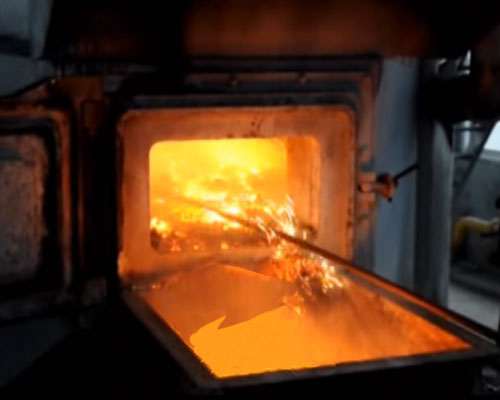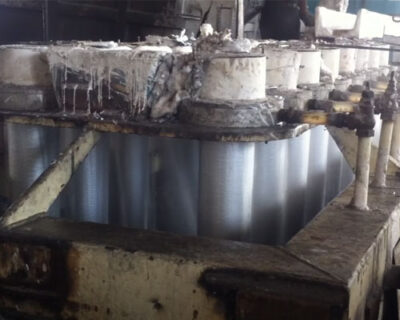Aluminum Alloy Casting is important for getting the high quality aluminum products. After the aluminum alloy ingot is subjected to homogenization heat treatment, sometimes blister surface bubbles are formed on the surface. The surface of the aluminum alloy castings appears as a dispersed bulge, and the bulge is a cavity. Through magnification, the inner wall of the cavity has a shiny metallic luster.
The dendrite structure remaining after the loose and uniform annealing will be in the vicinity of the bubble cavity, and the dendrite structure at the corresponding position on the inner wall of the bubble has a correspondence. Observed with an electron microscope, the inner wall of the bubble has a terrace pattern, and the surface bubble is loose. The bubbles on the surface of the aluminum alloy ingot do not exist after casting, but only after the casting is uniformly annealed. It does not seem to be a metallurgical defect, but it is caused by too high hydrogen content in the ingot process.

Aluminum Alloy Casting
In the process of smelting aluminum alloy, due to incomplete degassing, excessive gas (mainly hydrogen) remaining in the melt is retained in the aluminum ingot. If the hydrogen content is too high, bubbles will form in the aluminum ingot.
In addition to the hydrogen content of the aluminum ingot, the air bubbles on the surface of the aluminum ingot are also related to the cooling rate and homogenization temperature. According to the research of aluminum-magnesium-silicon alloys, when the hydrogen content in the ingot is the same, the faster the casting cooling rate, the higher the homogenization temperature, the easier it is to form bubbles on the surface of the aluminum ingot. The higher the hydrogen content in the ingot activity, the lower the homogenization temperature of the bubbles on the production surface, regardless of the cooling rate.
In addition to casting ingots, aluminum alloys can also produce bubbles on the surface of processed products such as plates and extruded products during heat treatment. Besides, it is also related to the excessive humidity of the heat treatment furnace.
Atomic hydrogen is generated on the surface of water vapor and aluminum alloy. The hydrogen atom has a small radius and diffuses into the metal layer along the grain boundary and lattice. When the temperature in the furnace is reduced, the hydrogen concentration in the furnace is very low, and hydrogen is precipitated from the solid solution. The pressure reaches multiple atmospheric pressures, which bulges the surface metal to form bubbles.

To prevent bubbles on the surface of aluminum ingots and aluminum products, we can start from the following four aspects:
1. Select the appropriate aluminum liquid degassing system and filtering equipment to minimize the hydrogen content of the aluminum ingot.
2. When performing homogenous annealing and heat treatment on aluminum ingots, the temperature of the annealing furnace should be strictly controlled. And the annealing time should not be too long.
3. The humidity in the homogeneous annealing furnace should not be too high, and the maintenance and moisture resistance of the heat treatment equipment should be included in the work summary.
4. Aluminum alloy ingots, aluminum products, and production tools and utensils should be kept dry and protected from moisture.

